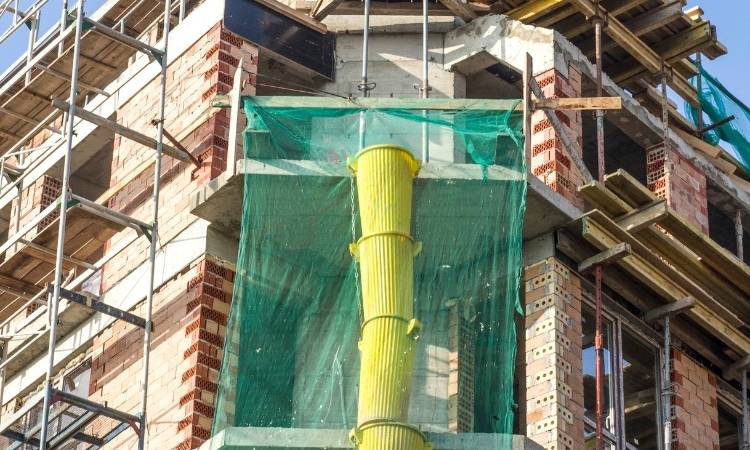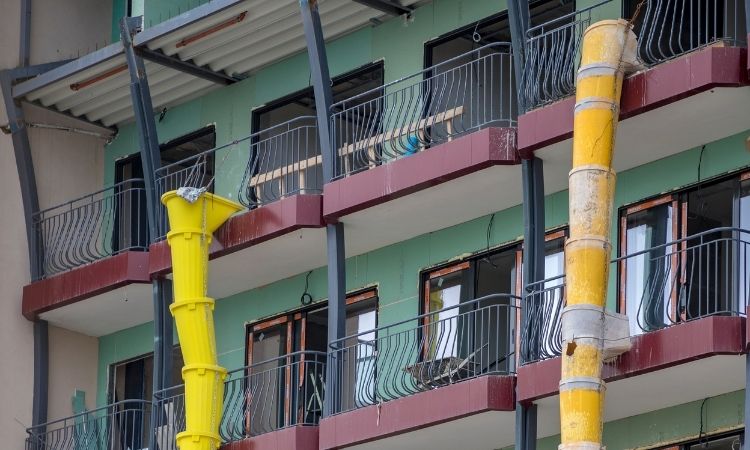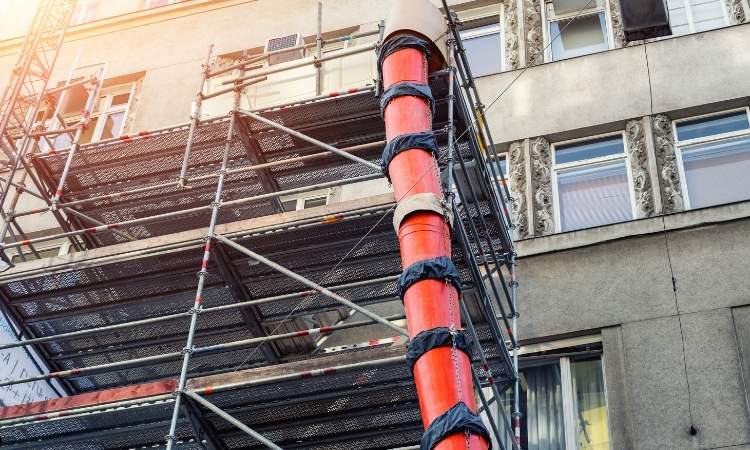Constructing a debris chute helps protect workers while making waste removal quicker during construction work. The Singapore construction environment demands Build a Debris Chute to let workers safely throw waste down from higher levels without danger to themselves or damage to their work areas.
This guide shows step-by-step how to build a debris chute system and lists all important materials and protection methods. Also, Affordable Rubbish Chute Singapore specializes in rubbish chute repair and rubbish chute replacement services in Singapore.
Why Build a Debris Chute?
A debris chute offers several advantages:
- A debris chute system prevents threats to worker safety that result from dropping trash.
- Improves efficiency in waste disposal.
- Reduces labor costs and time.
- The system isolates garbage from the building works area.
- Our system shields the outside environment from falling waste materials.
- The building system prevents dust and particles from entering into the air which keeps workers safe from potential health issues.
Materials Required
You will need these elements to build a debris chute:
- Durable plastic or metal tubes (e.g., PVC pipes or heavy-duty plastic barrels)
- Sturdy brackets and chains for support Rope or cable ties
- Safety nets Protective gloves and goggles
- Construction-grade adhesive Drill and screws
- Support frame or scaffolding
- Weather-resistant covers for outdoor projects

Step Guide to Building a Debris Chute
Step 1: Planning and Site Assessment
- Take measurements from ground level to ceiling and examine the structure.
- Placing the chute at the waste storage area lets trash exit to the collection point without delay.
- You must follow Singapore building rules and get the required project authorizations.
- You need open space to promote free movement of waste materials.
Step 2: Assembling the Chute Sections
- Use strong tools to make all plastic and metal tube pieces have uniform lengths.
- Fix the tube parts side by side with plastic brackets and screws.
- Apply construction adhesive to improve connection areas between parts.
- Crook the ending of each segment to create better trash passage.
Step 3: Building the Support Structure
- Mount the chute on a strong support system such as a steel beam or scaffold.
- Securely fasten the top part of the chute onto the frame.
- Secure the chute both above and below with chains and ropes to stop it from shaking.
- Make sure the support system is well fastened to handle blowing winds and outside pressure.
Step 4: Installing Safety Measures
- Put safety nets above the chute to stop falling materials from hitting the ground.
- The work area needs signs to let workers and anyone else know about the danger.
- Set up the chute bottom to match exactly with the waste storage bin.
- Protect workers and facilities from dust by adding covers to the chute system when working inside buildings.
Step 5: Testing and Adjustments
- Perform a quality exam with a small debris test.
- Look for loose fittings and buildup inside the system.
- Modify the chute setup to make it operate better.
- The chute system must work with small to large waste materials without issues.

Safety Precautions
- Put on protective equipment at all times when you need gloves and eye protection.
- Check for damage in the chute during normal operations.
- Keep everyone working with the debris area in constant contact with each other.
- Follow the required security rules of Singapore.
- Include safety controls that will stop operations when obstructions happen.
Maintenance and Inspection
- Regular cleaning helps avoid material jams from blocking the chute path.
- Examine all parts of the supporting system to find any damage before it causes issues.
- Replace damaged elements without delay because of safety risks.
- Apply lubrication to parts that move and joint connections to block wear and tear.
- Regularly check safety practices according to established standards.
Common Challenges and Solutions
- Widen the chute sections and make it easier to clean to stop objects from getting stuck.
- Protect the chute from weather damage with resilient covers plus secure it against high winds.
- Attach rubber padding to decrease noise that comes from dropped material.
- Teach workers about chute safety through programs that share correct operating methods and procedures.
Conclusion
Building a Debris Chute serves as an effective and safe method for handling construction waste properly. You can build a lasting and safe chute system that helps make work safer while raising quality through both safe construction methods and proper rules.
You need to construct a debris chute in Singapore regardless of your role in either major Debris Chute Building projects or small renovation work because it ensures site safety and cleanliness. Following best installation and maintenance practices your debris chute becomes an essential waste disposal unit.

